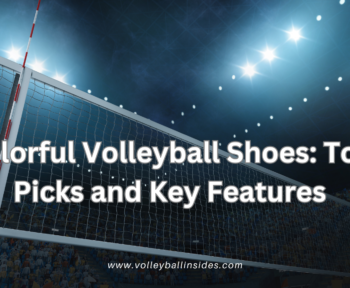Volleyball is a dynamic and fast-paced sport that demands quick movements, powerful jumps, and sudden changes in direction. While these elements contribute to the game’s excitement, they also increase the risk of ankle sprains, one of the most common injuries in volleyball. To combat this risk and safeguard your performance, Volleyball Ankle Braces have emerged as a crucial piece of protective equipment.
Why Players Need Volleyball Ankle Braces?
Ankle sprains occur when the ankle joint rolls or twists beyond its normal range of motion, causing ligaments to stretch or tear. Volleyball players are particularly susceptible to these injuries due to the sport’s frequent jumping, landing, and lateral movements. Studies have shown that volleyball players have a 2-6 times higher risk of ankle sprains compared to participants in other sports.
Ankle braces play a vital role in preventing these injuries by providing external support and stability to the ankle joint. They restrict excessive movement, particularly inversion (rolling inward) and eversion (rolling outward), which are the primary causes of ankle sprains.
Types of Volleyball Ankle Braces
Volleyball ankle braces come in various styles and levels of support to cater to different needs and preferences. The three main types are:
Lace-up braces:
These braces provide the most comprehensive support and are often recommended for players with a history of ankle sprains or those who require maximum stability.
Strap braces:
Strap braces offer a good balance of support and flexibility, making them suitable for both preventative and rehabilitative use.
Compression sleeves:
Compression sleeves provide a snug fit and mild support, primarily used for preventative measures and pain relief.
Choosing the Right Volleyball Ankle Brace
The choice of ankle brace depends on several factors, including:
Severity of previous ankle sprains:
If you have a history of severe ankle sprains, a lace-up brace with rigid side supports is recommended.
Level of activity:
For high-level competitive players, a more supportive brace like a lace-up or strap brace is generally preferred.
Individual preferences:
Some players may prefer the snug fit and flexibility of a compression sleeve, while others may feel more comfortable with the sturdier support of a lace-up or strap brace.
Benefits of Wearing Volleyball Ankle Braces
The benefits of wearing volleyball ankle braces extend beyond just preventing injuries. They can also:
Enhance performance and stability, allowing for more confident and agile movements
Reduce fatigue and muscle soreness by providing joint support and reducing muscle strain
Promote faster recovery from ankle sprains by minimizing inflammation and pain
Tips for Proper Ankle Brace Use
To maximize the effectiveness of your ankle brace, follow these tips:
Wear the brace correctly:
Ensure the brace is snug but not too tight, and that it fits properly around the ankle joint.
Wear the brace consistently:
Wear the brace during all volleyball activities, including practices, games, and warm-ups.
Maintain the brace:
Regularly clean and dry your brace to prevent wear and tear.
(FAQS)
Q: Do I need to wear an ankle brace if I’ve never had an ankle sprain before?
A: While wearing an ankle brace is not mandatory for everyone, it is highly recommended for volleyball players, especially those with a history of ankle sprains or those who participate in high-level competition. The high frequency of jumping, landing, and lateral movements in volleyball increases the risk of ankle injuries, and ankle braces can effectively reduce this risk.
Q: What type of ankle brace is best for volleyball?
A: The best type of ankle brace for volleyball depends on your individual needs and preferences. However, lace-up braces and strap braces generally provide the most comprehensive support and are recommended for players with a history of ankle sprains or those who require maximum stability. Compression sleeves offer less support but can be used for preventative measures and pain relief.
Q: How do I wear an ankle brace properly?
A: Proper fit is crucial for the effectiveness of an ankle brace. Ensure the brace is snug but not too tight, and that it fits securely around the ankle joint. Refer to the manufacturer’s instructions for specific fitting guidelines.
Q: How often should I wear my ankle brace?
A: For maximum protection, wear your ankle brace during all volleyball activities, including practices, games, and warm-ups. Consistent use can significantly reduce the risk of ankle sprains.
Q: Can wearing an ankle brace affect my performance?
A: While some players may experience a slight adjustment period when initially wearing an ankle brace, most find that it enhances their performance and stability. Ankle braces can provide confidence and support, allowing for more agile and controlled movements.
Q: Can I wear two ankle braces at once?
A: Wearing two ankle braces at once is generally not recommended. While it may seem like it would provide double protection, it can actually restrict ankle movement and increase the risk of other injuries. Focus on using a single, properly fitted ankle brace for optimal support.
Q: How do I care for my ankle brace?
A: Regular cleaning and maintenance will extend the lifespan of your ankle brace. Hand wash the brace with mild soap and water, and allow it to air dry completely. Avoid harsh detergents or machine washing, as this can damage the materials.
Q: What should I do if I experience any discomfort or pain while wearing an ankle brace?
A: If you experience any discomfort or pain while wearing an ankle brace, discontinue use and consult with a healthcare professional or sports medicine specialist.
Conclusion:
Volleyball ankle braces serve as valuable tools for preventing ankle sprains and enhancing performance. By choosing the right brace and using it properly, volleyball players can minimize their risk of injury and maximize their time on the court. Remember, prevention is always better than cure, so invest in a quality ankle brace and safeguard your volleyball journey.




